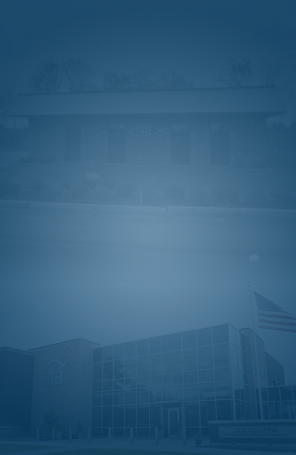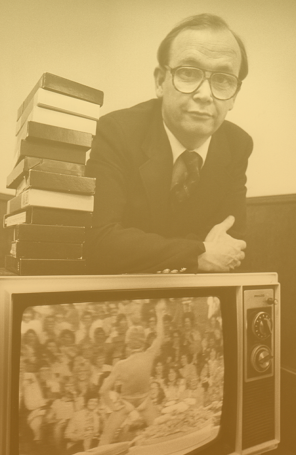Disney and How Children Learn
Sign up for a six month free
trial of The Stand Magazine!
By now most of the U.S. has probably heard that Disney’s live action remake of its classic, Beauty and the Beast, is out in theaters March 17. A sizeable chunk of those people also probably know the film features a gay sub-theme.
For those familiar with the 1991 animated film version, the villain Gaston had a toady sidekick named LeFou. In the live action version, LeFou wrestles with his homosexual feelings for Gaston.
Bill Condon, the film’s director, told one magazine, “LeFou is somebody who on one day wants to be Gaston and on another day wants to kiss Gaston. He’s confused about what he wants. It’s somebody who’s just realizing that he has these feelings. And [LeFou] makes something really subtle and delicious out of it. And that’s what has its payoff at the end, which I don’t want to give away. But it is a nice, exclusively gay moment in a Disney movie.”
Naturally, the evangelical community has erupted in controversy over what Christians should do about this. Should they complain to Disney? Boycott the film? Do nothing at all? Defend the company’s actions?
Disney had stirred up a little trouble before this, too. In what AFA’s OneMillionMoms said was a first for the Disney Channel, an episode of the cartoon Star vs. the Forces of Evil featured a scene in which same sex couples kiss.
Last summer, Disney/Pixar released Finding Dory, its sequel to the 2003 animated hit, Finding Nemo. In the trailer for Dory, viewers see a lesbian couple with a little girl – or are they just two gal pals taking a tyke to the park?
No one can really prove it either way, and those connected with Finding Dory responded coyly when questioned. Producer Lindsey Collins, for example, told USA Today, “We never asked them [what their sexual orientation was].”
Co-director Andrew Stanton was equally evasive. “We have not asked that of any of the couples in any of our shots in any of our movies,” he said. “They can be whatever you want them to be. There’s no right or wrong answer.”
As it turns out, there is a right or wrong answer for many homosexual activists, who have called on the company to dive into the gay end of the pool. Writing in the Daily Beast, lesbian Samantha Allen chastised Disney’s ambiguity on the issue, calling Stanton’s answer downright “cowardly.”
“In so doing,” she said, “the Finding Dory team also gets to recuse themselves from commenting publicly on Disney’s disappointing lack of LGBT representation. GLAAD recently gave the studio a ‘failing’ grade for having zero LGBT characters across all 11 of their 2015 films.”
(GLAAD, formerly known as the Gay & Lesbian Alliance Against Defamation, monitors media for its portrayals – or lack of them – of homosexuals.)
There’s a right or wrong answer for most Christians, too, many of whom believe Disney has, at the very least, dipped its toe into the pink waters of the gay agenda.
In the first place, I would agree with Allen that being gay or lesbian is not in the eye of the beholder. Under the circumstances, Stanton’s answer, “They can be whatever you want them to be,” is postmodern mush, if not totally ludicrous.
Why should animated films, intended primarily for children, deal with these issues anyway? What exactly is a cartoon kiss? These are not real characters, after all.
Of course, this argument proves too much. If the kiss means nothing, why did the producers throw one in? Obviously, to them, the kiss did mean something. But exactly what does it mean? To answer that, we must remember how kids learn.
When I was a young child, there was a pretty big controversy in my home about whether or not my sisters and I should watch The Three Stooges. Older readers will remember them, the most famous of them being Moe, Larry, and Curly; younger readers probably won’t. These were actors who starred in once-famous comedic movie (and then television) short features. The Three Stooges were adult men whose hijinks made several generations of viewers laugh until they cried. The crazy sounds they made – nyuk! nyuk! nyuk! might be the most famous – were only part of the fun. (Here is a compilation of those sounds, although it’s long, even for a fan.)
The Stooges slapped, poked, punched, and shoved each other as they tried to extricate themselves from jam after jam. They also abused each other with instruments that, in the real world, could kill or maim someone. They might use pliers to twist the nose; one might grab a wrench or hammer and bonk someone on the head. (Here is a good sampling of these.)
Apparently, as a child, I was caught chasing my younger sister around the house with a hammer, going nyuk! nyuk! nyuk!, while trying to hit her. My parents banned the watching of The Three Stooges until we got older.
The point is that children, especially when very young, are like sponges. They absorb what they see and what they hear at phenomenal rates. Ask any parent who has been embarrassed in public by a child who repeated what he or she heard privately in the home.
What do children learn by seeing lesbian couples or same-sex kisses or LeFou pining after Gaston? First, of course, they will learn that homosexuals exist. For example, take Disney’s 2013 mega-hit Frozen. If, as the gay community has been demanding, the company decides to give heroine Elsa a girlfriend in it’s upcoming sequel rather than a boyfriend, kids will notice. After all, it is a heterosexual world and even little tykes notice when something doesn’t fit into that mold.
I’m not saying that it’s wrong for children to know that gays and lesbians exist, only that parents should be the ones to tell them. Disney should not circumvent parents on this matter.
Kids take numerous cues from what they watch. If Moe can hit Curly with a hammer and it doesn’t crack his skull open or kill him, why can’t little Eddie hit his sister with one?
Children also notice when something is framed positively or negatively. At the end of Frozen, (Spoiler alert! Oh, who am I kidding? Is there anyone who hasn’t seen this movie?) kids know that Anna and Kristoff love each other – and that’s something to celebrate. It’s that knowledge that makes Anna’s self-sacrifice so inspiring. She surrenders her love of Kristoff in order to save her sister Elsa.
If Disney ever begins framing gay relationships in the same way, Christian parents will have to make a decision. Surely they will know their kids will learn the lesson that homosexuality is no different than heterosexuality.
But the Bible say it is different. This contrast in views about sexual orientation will create a struggle for the child. Do they believe the Bible and their parents, or Disney? Which one is telling the truth?
After seeing how much my granddaughter loves Frozen’s Elsa, this is not an insignificant matter. It has grave – and perhaps eternal – consequences.

Sign up for a free six-month trial of
The Stand Magazine!
Sign up for free to receive notable blogs delivered to your email weekly.


















